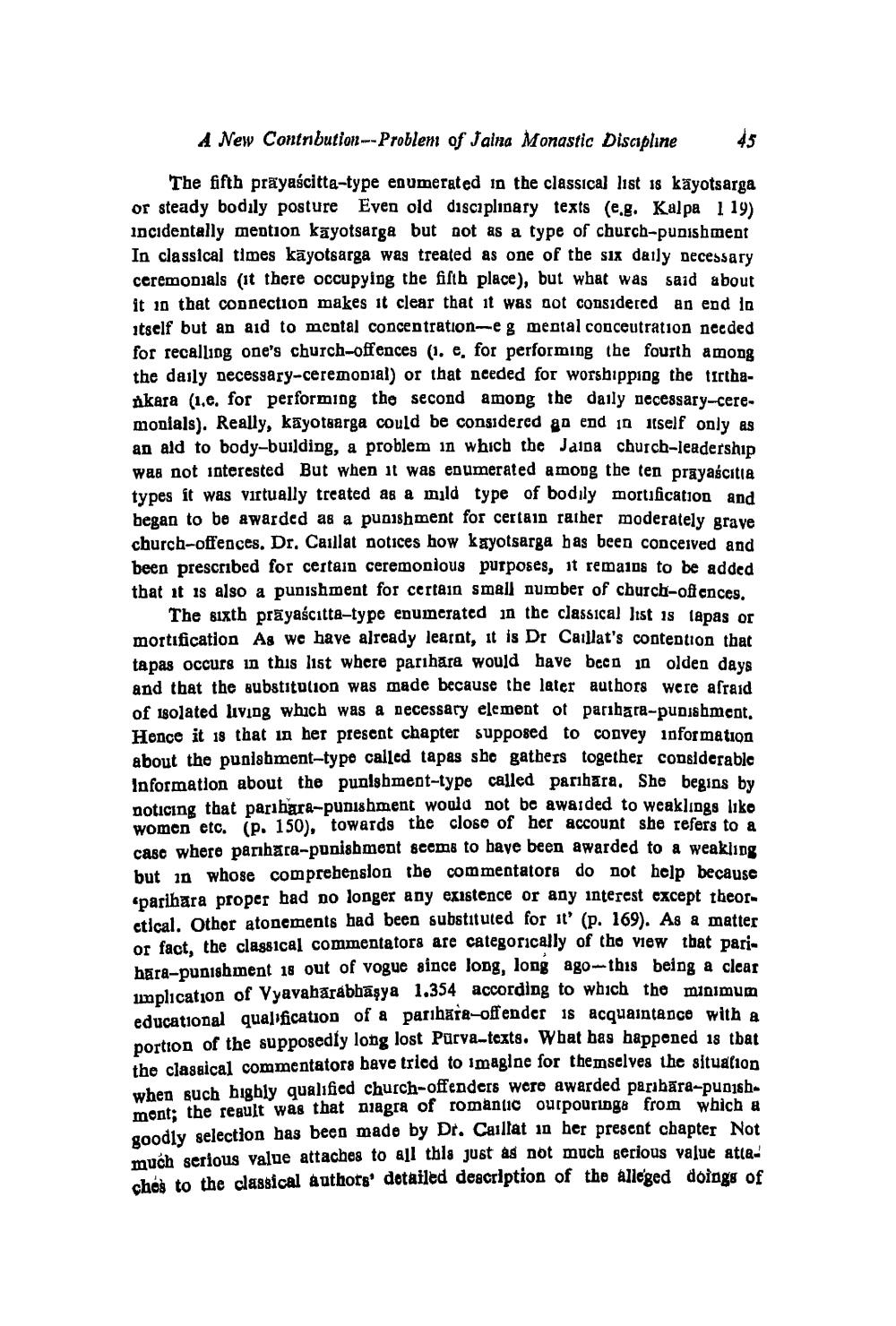________________
A New Contnbution-- Problem of Jaina Monastic Discipline
The fifth prayascitta-type enumerated in the classical list 18 käyotsarga or steady bodily posture Even old disciplinary texts (e.g. Kalpa 1 19) incidentally mention kayotsarga but not as a type of church-punishment In classical times kāyotsarga was treated as one of the six daily necessary ceremonials (it there occupying the fifth place), but what was said about it in that connection makes it clear that it was aot considered an end in itself but an aid to mental concentration-eg mental conceutration needed for recalling one's church-offences (1. e, for performing the fourth among the daily necessary-ceremonial) or that needed for worshipping the tirthankara (1.e. for performing the second among the daily necessary-ceremonials). Really, kayotsarga could be considered an end 10 itself only as an ald to body-building, a problem in which the Jaina church-leadership was not interested But when it was enumerated among the ten prayascitia types it was virtually treated as a mild type of bodily mortification and began to be awarded as a punishment for certain rather moderately grave church-offences. Dr. Caillat notices how kayotsarga has been conceived and been prescribed for certain ceremonious purposes, it remains to be added tbat it is also a punishment for certain small number of church-oftcnces.
The sixth prayaścıtta-type enumerated in the classical Itst is tapas or mortification As we have already learnt, it is Dr Caillat's contention that tapas occurs in this list where parihara would have been in olden dave and that the substitution was made because the later authors were afraid of 1solated living which was a necessary element of parihara-punishment, Hence it 18 that in her present chapter supposed to convey information about the punlabment-type called tapas she gathers together considerable Information about the punishment-type called parihara. She begins by noticing that parihara-punishment would not be awarded to weaklings like women etc. (p. 150), towards the close of her account she refers to a case where parihara-punishment seems to have been awarded to a weakling but in whose comprehension the commentators do not help because «parihara proper had no longer any existence or any interest except theoretical. Othor atonements had been substituted for it' (p. 169). As a matter or fact, the classical commentators are categorically of the view that pari. bara-punishment 18 out of vogue since long, long ago.this being a clear implication of Vyavaharabbāşya 1.354 according to which the minimum educational qualification of a parihara-offender 18 acquaintance with a portion of the supposedly long lost Purva-texts. What has happened 18 tbat the classical commentatora bave tried to imagine for themselves the situation when such bigbly qualified church-offenders were awarded paribāra-punishmont; the result was that niagra of romantic outpourings from which a goodly selection has been made by Dr. Caillat in her present chapter Not much serious value attaches to all this just as not much serious value attachós to the classical authors' dotailed description of the alleged doings of




